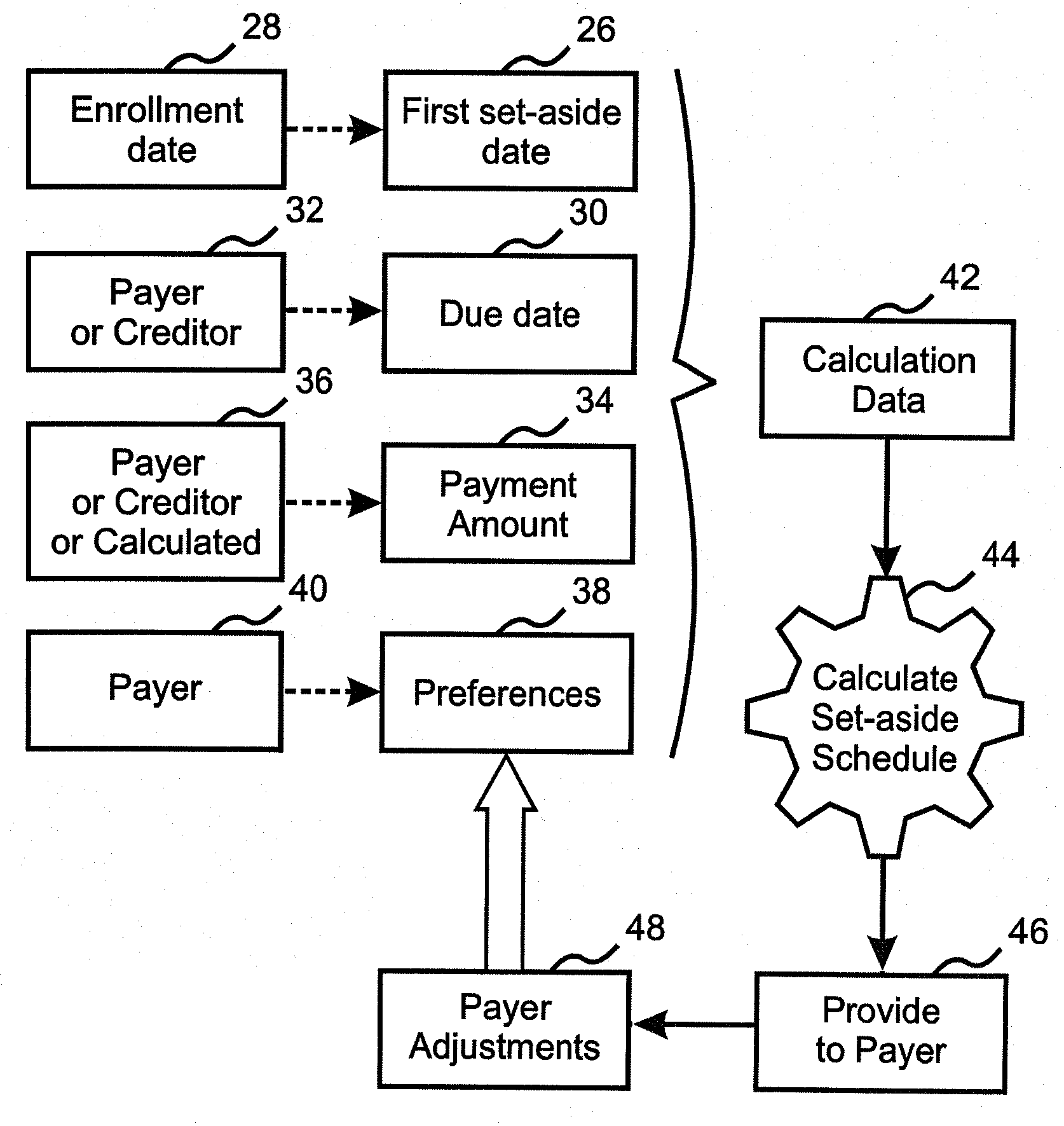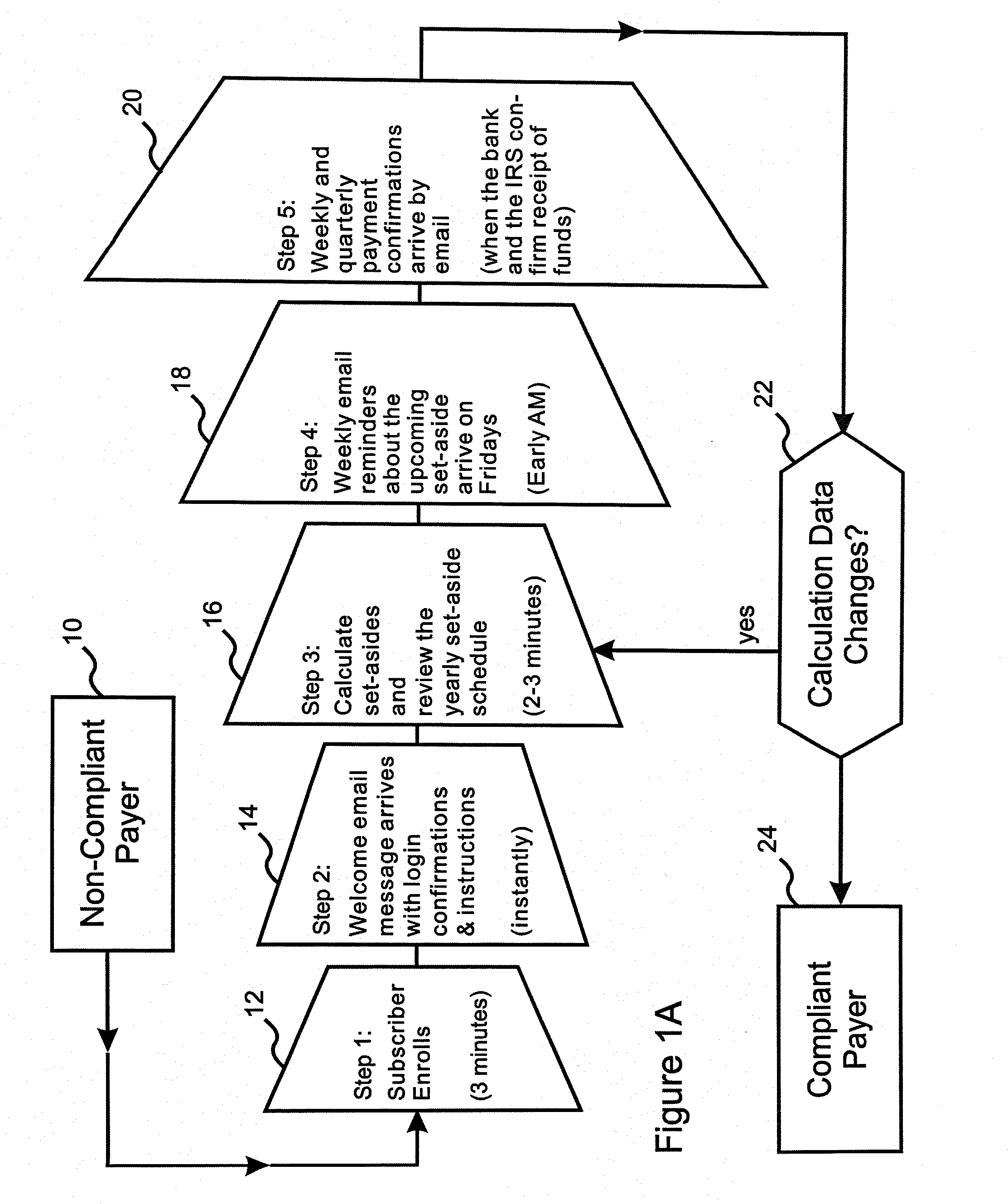Flexible and adaptive accrual method and apparatus for calculating and facilitating compliance with taxes and other obligations
a tax and other obligation, flexible and adaptive technology, applied in the field of systems and methods for facilitating the payment of financial obligations, can solve the problems of inability to maintain a bank account, inability to meet the requirements of the tax, so as to minimize overpayments and/or payment amount fluctuations, avoid underpayments
- Summary
- Abstract
- Description
- Claims
- Application Information
AI Technical Summary
Benefits of technology
Problems solved by technology
Method used
Image
Examples
Embodiment Construction
[0041]Unless specifically stated otherwise, as apparent from the discussions herein, it is appreciated that throughout the specification discussions utilizing data processing or manipulation terms such as “processing”, “computing”, “calculating”, “determining”, or the like, typically refer to the action and / or processes of a computer or computing system, or similar electronic computing device, that manipulate and / or transform data represented as physical, such as electronic, quantities within the computing system's registers and / or memories into other data similarly represented as physical quantities within the computing system's memories, registers or other such information storage, transmission or display devices.
[0042]Practitioners of ordinary skill will recognize that a financial account in a computer system is a set of data stored in the system that are related to the user or account owner / payer, or the taxing authority or other creditor, including data representing the amount ...
PUM
 Login to View More
Login to View More Abstract
Description
Claims
Application Information
 Login to View More
Login to View More - R&D
- Intellectual Property
- Life Sciences
- Materials
- Tech Scout
- Unparalleled Data Quality
- Higher Quality Content
- 60% Fewer Hallucinations
Browse by: Latest US Patents, China's latest patents, Technical Efficacy Thesaurus, Application Domain, Technology Topic, Popular Technical Reports.
© 2025 PatSnap. All rights reserved.Legal|Privacy policy|Modern Slavery Act Transparency Statement|Sitemap|About US| Contact US: help@patsnap.com



